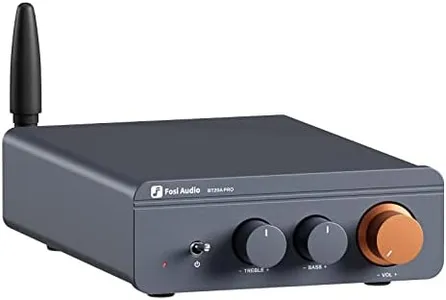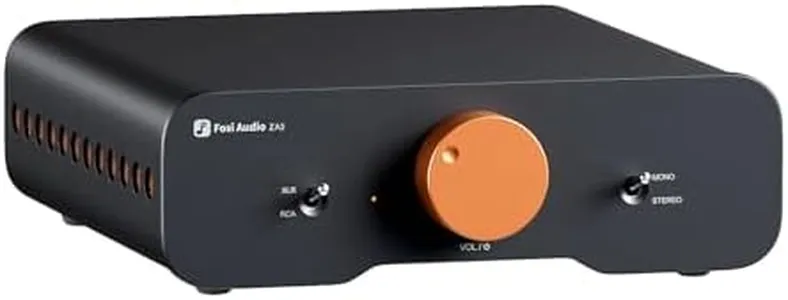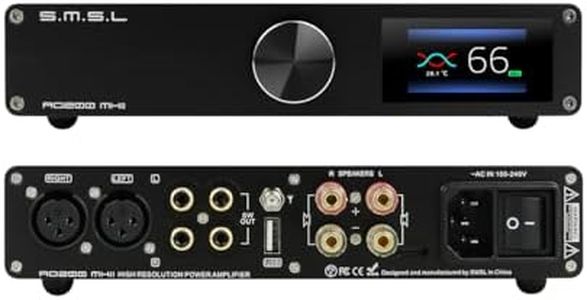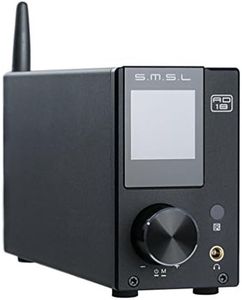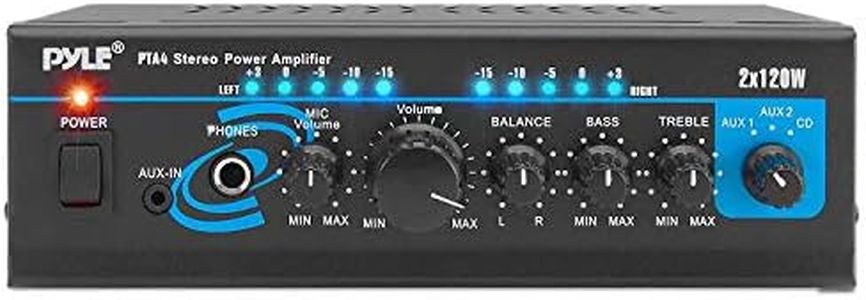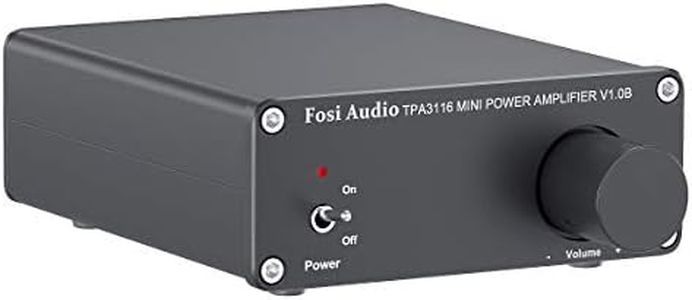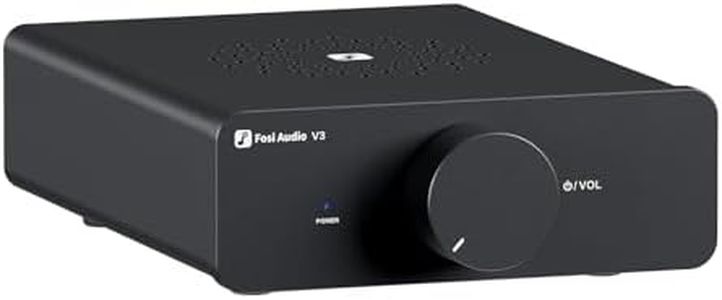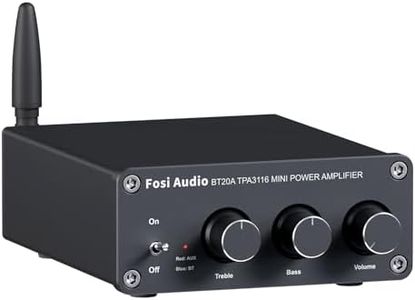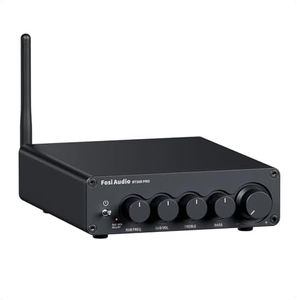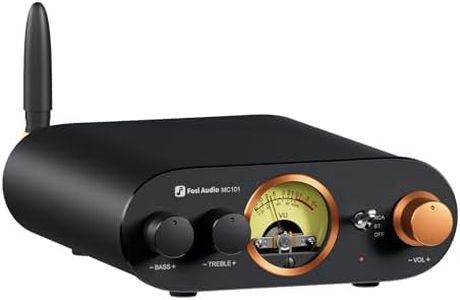We Use CookiesWe use cookies to enhance the security, performance,
functionality and for analytical and promotional activities. By continuing to browse this site you
are agreeing to our privacy policy
10 Best Mini Stereo Amplifiers
From leading brands and best sellers available on the web.By clicking on a link to a third party's website, log data is shared with that third party.
Buying Guide for the Best Mini Stereo Amplifiers
Choosing a mini-stereo-amplifier is all about matching the device to your listening needs, space, and audio sources. These compact amplifiers are perfect for powering bookshelf speakers, improving the sound quality of TVs, computers, or turntables, and saving space in smaller rooms. Understanding your listening habits, the type of speakers you own, and where this amp will be used helps you pick the best fit. You'll want to pay attention to power output, input options, connectivity, and build quality to ensure your amplifier fits seamlessly into your setup.Power Output (Watts per channel)Power output tells you how much energy the amplifier sends to each speaker. The higher the watts, the more volume and headroom you have; this mainly matters if you're using large or demanding speakers or if you listen at high volumes. Lower power (less than 25W per channel) is suitable for small, efficient speakers and quiet spaces. Medium output (25–50W) can handle most bookshelf speakers well. Higher output (over 50W) supports bigger rooms and less sensitive speakers. Choose the power based on your speaker’s needs and your usual listening volume—higher isn’t always better if your speakers and room are small.
Input OptionsInput options determine what sources you can connect, such as phones, TVs, computers, or turntables. Common inputs include RCA, 3.5mm aux, optical, USB, and Bluetooth. If you mainly use digital devices, look for digital inputs or Bluetooth. For turntables or CD players, RCA inputs are important. Prioritize amps with the inputs you use most often—think about what you’ll plug in today and in the future.
Impedance CompatibilityImpedance compatibility describes which speaker types the amplifier can safely drive, measured in ohms (Ω). Most mini amps are designed for 4–8 ohm speakers. Connecting an amp to a speaker with the wrong impedance can cause poor sound or damage. Check your speakers’ impedance, and ensure the amplifier lists support for that range to guarantee safety and good performance.
Size and Form FactorMini-stereo-amplifiers come in a range of sizes, though all are compact. Size matters based on where you’ll place the amp—shelf, desk, or tight space. Ultra-small units fit nearly anywhere but may have fewer features. Slightly larger models may offer more inputs or better cooling for extended use. Match the size to your space and consider how visible or hidden you want the amplifier to be.
Connectivity FeaturesConnectivity covers features like Bluetooth, Wi-Fi, or USB playback, which can make your setup more flexible. Bluetooth is helpful for wireless streaming from phones or tablets. USB can allow direct digital connection to computers. Go for more connectivity options if you like streaming music wirelessly or want to avoid complex cabling. Simpler amplifiers are fine if your needs are wired and straightforward.
Tone ControlsTone controls (like bass and treble knobs) let you adjust the sound character to your liking. Some amps offer detailed controls; others may have none, offering pure sound. If you enjoy tweaking audio or have less-than-ideal speakers, tone controls can help you shape the sound. If you prefer a simpler, more natural sound, you may not need this feature.
Build QualityBuild quality affects durability, heat handling, and even the sound's cleanliness. Well-built amps are heavier, use quality connectors, and provide stable performance at higher volumes. If you’ll use your amplifier daily or move it around, a robust build is important. For light occasional use, basic construction might be sufficient.

